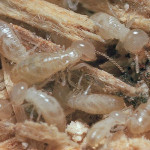Comparative Metamorphosis
A Carolina EssentialsTM Investigation

Total Time: 30 mins
Prep: 30 mins | Activity: 20 - 30 mins

Life Science
5-8
Elementary | Middle School
Overview
This change-over-time, construction of an explanation activity serves 2 purposes. First, students observe development of 3 different insects from the larva or nymph stage through the adult stage. Second, students complete a comparative development study of metamorphosis, observing complete and incomplete metamorphosis. Students hone their observation skills while their drawings serve as traditional, biological qualitative data. Student drawings are used to explain the life cycles of the 3 insects. If well cared for, the insects may be kept in habitats for their life span and used for additional activities.
Essential Question
What are the life cycles of insects?
Investigation Objectives
- Identify the stages of complete metamorphosis.
- Identify the stages of incomplete metamorphosis.
- Compare the stages of the 2 types of life cycles.
Next Generation Science Standards* (NGSS)
SCIENCE & ENGINEERING PRACTICES
Constructing Explanations
- Apply scientific ideas, principles, and/or evidence to construct, revise and/or use an explanation for real-world phenomena, examples, or events.
DISCIPLINARY CORE IDEA
LS1.4.A
- Comparison of the embryological development of different species also reveals similarities that show relationships not evident in the fully-formed anatomy.
CROSSCUTTING CONCEPTS
Structure and Function
- Students model complex and microscopic structures and systems and visualize how their function depends on the shapes, composition, and relationships among its parts. They analyze many complex natural structures and systems to determine how they function.
Materials
- 1 Milkweed Bug Life Cycle Assortment
- 1 Painted Lady Culture 33-Larvae Set
- 1 Painted Lady Culture Cup Set
- 1 Carolina™ Butterfly Sanctuary
- 2 Aquarium, Plastic Culture Jars, 1 gal (1 for lady beetles and 1 for milkweed bugs)
- 1 Lady Beetle Larvae Set
- 1 Plastic Dual Magnifier, 3× and 6×
- 1 Milkweed Bug Culture Kit
- 1 Discovery Lens Kit
Safety and Disposal
Treat all animals with care and respect.
Non-native species should not be released into the wild. Any individual insects remaining may be kept in a permanent habitat or placed in a resealable bag and put in the freezer for 72 hours, and then disposed of as your state or district directs.
Procedures
Provide a habitat and follow all care instructions for each of the 3 species throughout the observation period.
Each student or group will need one individual from each species. Each organism needs its own container as the lady beetle larvae will eat the other 2 species.
STUDENT PROCEDURES
- Look at each insect with your naked eye. Make notes on your observation sheet.
- Use the magnifier and look at each insect again. Pay special attention to the mouth parts. Make notes on your observation sheet.
- Draw what you see in detail on your observation sheet.
- Return the insects to your teacher after each observation.
- Repeat the procedure until the adult insect emerges.
TEACHER PREPARATION AND TIPS
- Instruct students to look closely but not to touch the fragile, easily damaged insects.
- Point out the mouth parts of each species. Use a document camera or pictures so students know what to look for.
- Remind students that their drawing should be of what they actually see.
- Take pictures of each stage of development for all 3 insects. Use them for documentation and as an assessment tool later.
- Painted lady butterflies and spotted lady beetles exhibit complete metamorphosis. Milkweed bugs exhibit incomplete (simple) metamorphosis.
Data & Observations
See pictures of life cycles below for what each stage should look like. You may want to take pictures of each stage in the life cycle for documentation and as an assessment tool later.



Analysis & Discussion
1. Use the drawings in your observation sheets to make life cycle diagrams for all 3 insects. Label the life cycle stages. Include the number of days in each life cycle stage.
Student answers may vary in time frame but should be similar to the cycles below.
Approximate times for each stage:
| Painted Lady Butterfly | Lady Beetle | Milkweed Bug | |
|---|---|---|---|
| Egg | 3-5 days | 4-6 days | 4-7 days |
| Larva | 5-10 days | 10-14 days | n/a |
| Pupa | 7-10 days | 3-12 days | n/a |
| Nymph | n/a | n/a | 5 instars, 20-40 days |
2. Label each of the 3 cycles as complete metamorphosis or incomplete metamorphosis. Explain your thinking.
See picture above for the labeling. Student thinking should be based on the number of distinct stages that the insect goes through.
3. Draw a Venn diagram for the stages of metamorphosis. Label one circle Complete and the other circle Incomplete. Label the shared area Both. Fill in the sections of the Venn diagram. Include the name of an insect for each type of life cycle.

4. Optional assignment: What are 2 advantages and disadvantages of each type of metamorphosis?
Answers may vary.
Complete metamorphosis
Advantages: Typically, adults and larvae do not compete for the same food source, do not have the same predators, and occupy different habitats.
Disadvantages: Adults and larvae do not share the same food, which can be a disadvantage in food-poor environments; short adult life span; only adult has true mobility.
Incomplete metamorphosis
Advantages: No vulnerable pupa stage; parental protection can occur; mobility throughout life cycle.
Disadvantages: Nymphs compete with adults for food and habitat; share the same predators.
SHOP THE KIT
ADDITIONAL REFERENCE KITS
SAFETY REQUIREMENTS
- Safety Goggles Required
- Safety Gloves Required
HELPFUL LINKS
VIEW MORE ESSENTIALS
*Next Generation Science Standards® is a registered trademark of Achieve. Neither Achieve nor the lead states and partners that developed the Next Generation Science Standards were involved in the production of, and do not endorse, these products.
About The Author
Carolina Staff
Carolina is teamed with teachers and continually provides valuable resources–articles, activities, and how-to videos–to help teachers in their classroom.



